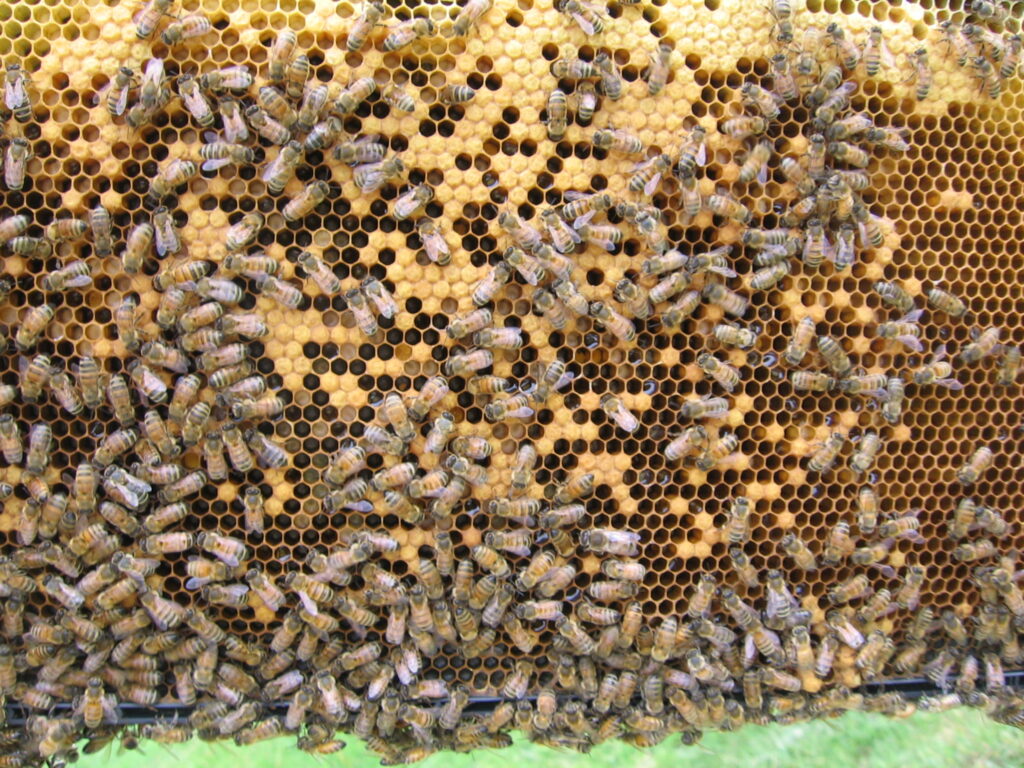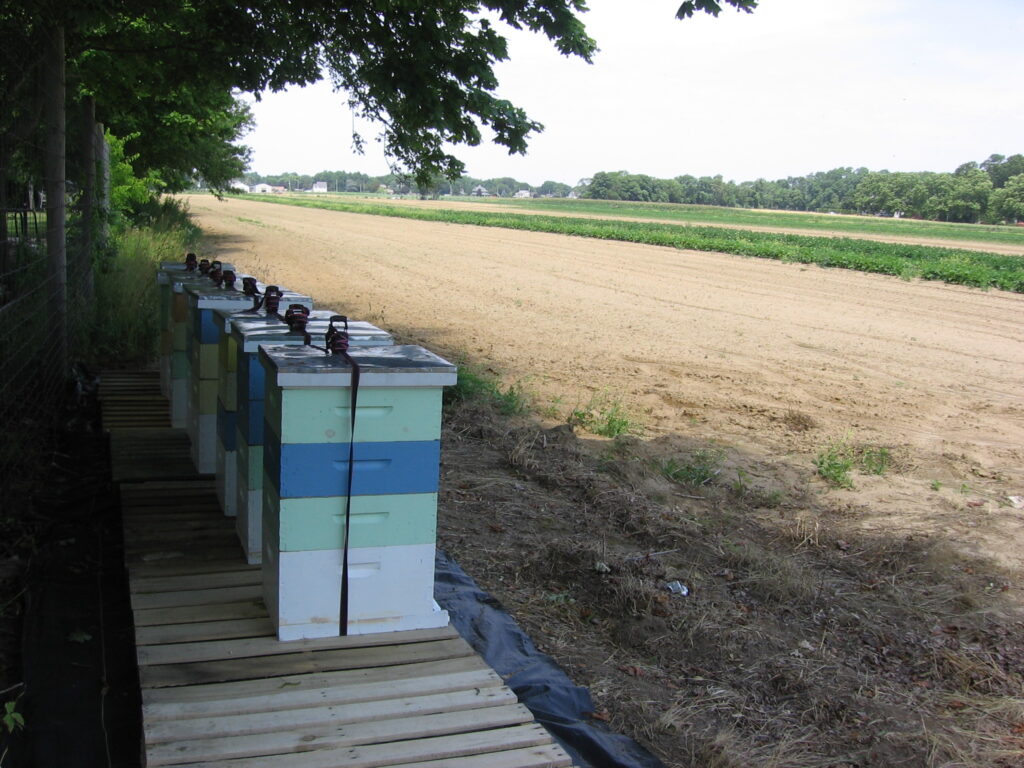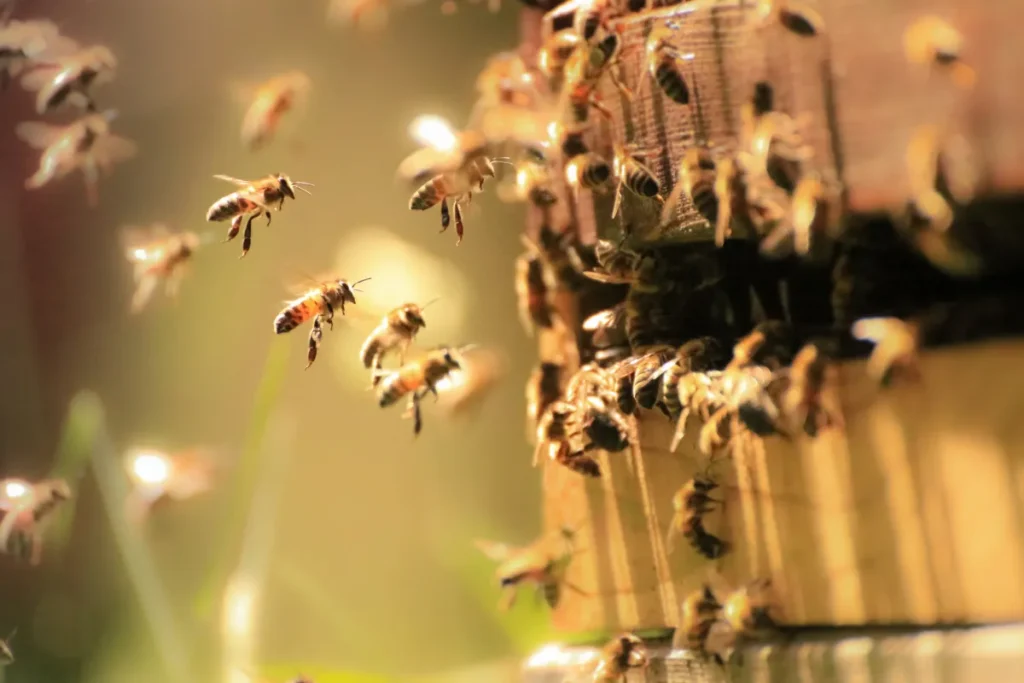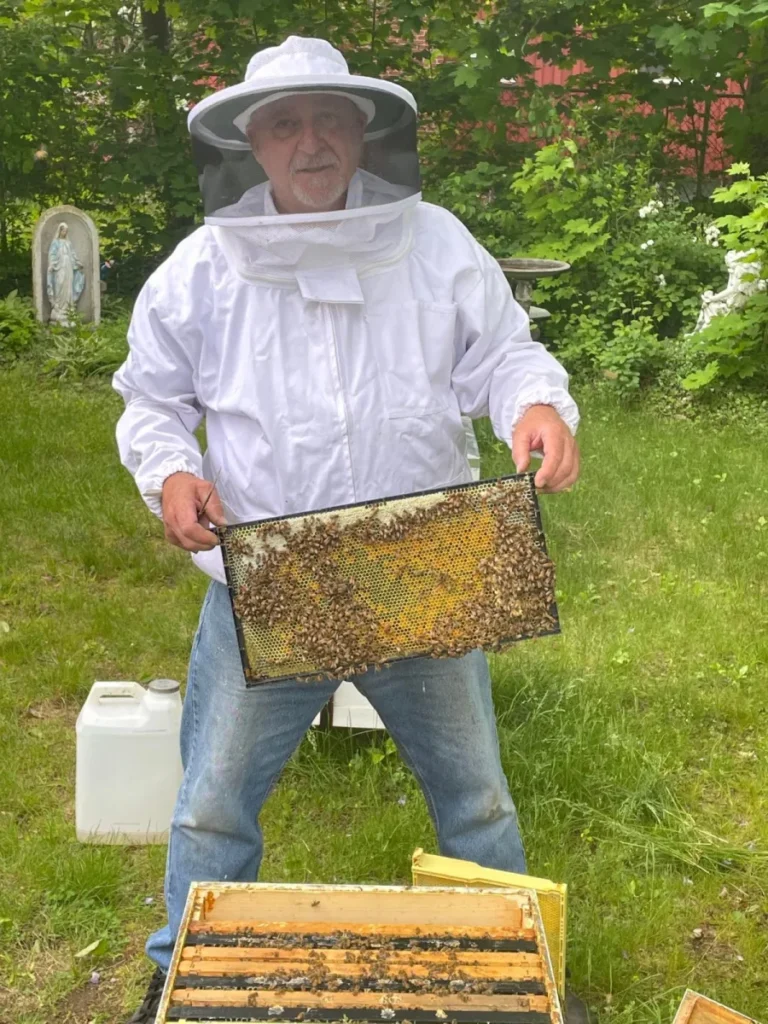Tom Santorelli, a beekeeper for more than a decade, had a problem. A queen bee, which can only fly a few feet, had left the area of the hive where she belonged and settled into the area where bees make honey. He had to move her so the honey could be stored there, and she could reproduce where it was safe.
“Suddenly, that hive became aggressive,” Santorelli, a 68-year-old Bay Shore resident with around 20 hives — most of them in Jamesport. With his bees protecting the stranded queen, he said, “I couldn’t go through that hive without being stung even through a bee jacket.”
Although the recommended procedure was to remove, replace and even kill the wayward queen, he couldn’t even find her in the cluster. So Santorelli decided to remove the “queen excluder,” which ordinarily prevents the queen from straying from her area. “I got stung a lot. She was able to go back down. The hive became mellow again,” he said. “There’s a saying that if mom’s not happy, nobody’s happy. It’s one of those things.”
While raising bees, technically, is agriculture, it is a business like no other, involving caring for thousands of bees harvesting and selling pure honey. But Santorelli, whose brand is Tomaso’s Apiary, respects bees not because they sting but because they survive as a species.
“Scientists have found fossils that show honeybees have been on earth for 160 million years,” Santorelli said. “That means they outlived the dinosaurs. They emerged from Asia and moved around.” While there are many types, most bees, like bumble bees, yellow jacks and wasps, don’t make honey. “Honey bees are not native to America,” Santorelli said. “They were brought here in the 1600s from Europe. We have our own native bees, but they don’t make honey.”
Honey bees play a vital role in New York State’s agriculture economy. Each year, thousands of bee colonies statewide help pollinate more than $300 million worth of agricultural crops such as apples, grapes, and pumpkins, he said.
“I pollinate a farm,” he said of a 200-acre farm that houses his hives in Jamesport. “The more the bees visit those flowers, the bigger the fruit gets.”
Santorelli is knowledgeable and fascinated by bees’ biology. “They have two stomachs, one for eating and another with an enzyme,” Santorelli said. “That enzyme changes nectar into honey.” Honey bees also have two sets of wings which beat like fans to reduce water in honey. They also have stripes that, like Spiderman, produce threads to build honeycombs.






